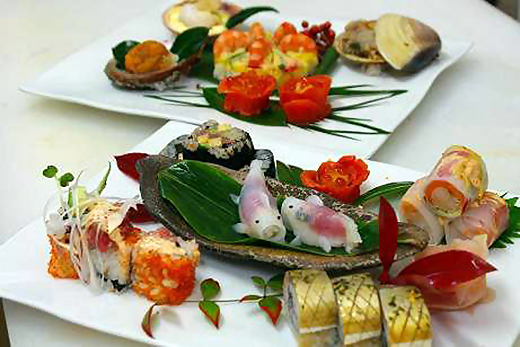
A couple of weeks back we posted an article here about the unique interpretation Ukraine has given Japan’s most iconic dish, sushi. Now, having read the insightful observations of Mr. Masayoshi Kazato, chairman for the World Sushi Cup, a competition between sushi chefs from around the world, we think it’s safe to say that not only has sushi gained footholds in all corners of the globe, each country has established its own set of regional recipes.
In countries worldwide, a sushi craze is catching on. One of the more recent nations to join in on the hype is Norway, which already had a strong industry for farmed salmon. Remember the online video of Human Sushi as an interpretive dance posted early this year? That interesting, if not disturbing, piece was created by Norwegians consumed by the craze and has reached more than 300,000 views since being uploaded last January.
And yet, Mr. Kazato would say that, relatively speaking, sushi is still in the first stages of expansion. As of right now, Japan accounts for more than 20 percent of the world’s sushi chefs. The other 80 percent are scattered throughout the world’s many other regions, particularly America, Europe, Russia, and the rest of Asia. That ratio may seem reasonable, until one remembers that Japan makes up less than two percent of the world’s population. It appears that sushi still has a lot of expanding to do.
Of course, when sushi finds footing in a new land, it does not always retain its traditional style. The means by which sushi expands into new regions and the changes it must undergo in order to match the taste palates and culinary specialties of every city or country creates a a number of evolutionary branches which result in various interpretations of sushi around the globe.
In places like Britain and Singapore, the mix of ingredients closely resembles the original Japanese type, but in countries like Germany and Israel, where avocado and mayonnaise are often added into the rolls, the sushi would be classified more as the American type. French type sushi is characterized by the inclusion of things like foie gras, pineapple, and balsamic glaze and can be found in areas such as Denmark and Belarus.
Other types of sushi are somewhat less regionally affiliated but classified according to what they contain. For example, fruit type sushi might contain mango and avocado, as is popular in Thailand. Sushi in Belgium includes their specialty chocolates to create a unique dessert type sushi with pickled tuna and a dark chocolate topping.
Of course, the contents are not the only unique things found in the many incarnations of sushi. The shape of sushi also changes according to local sensibilities. For example, many western countries are not accustomed to eating seaweed and find the sight of it unappetizing. Therefore, many of the world’s sushi restaurants will hide the seaweed inside the roll and move the rice to the outside. Color and interest might then be added using a topping of fish roe, sesame seeds, or even another layer of fish.
Tell us, what type of sushi are you most accustomed to? If you ever get the chance to travel abroad, why not find yourself a sushi bar? It may be labeled at Japanese cuisine, but really, you’re sure to find a unique embodiment of the region’s character in how they roll their fish.
Source: web R25 (Japanese)
Top image: World Sushi Cup